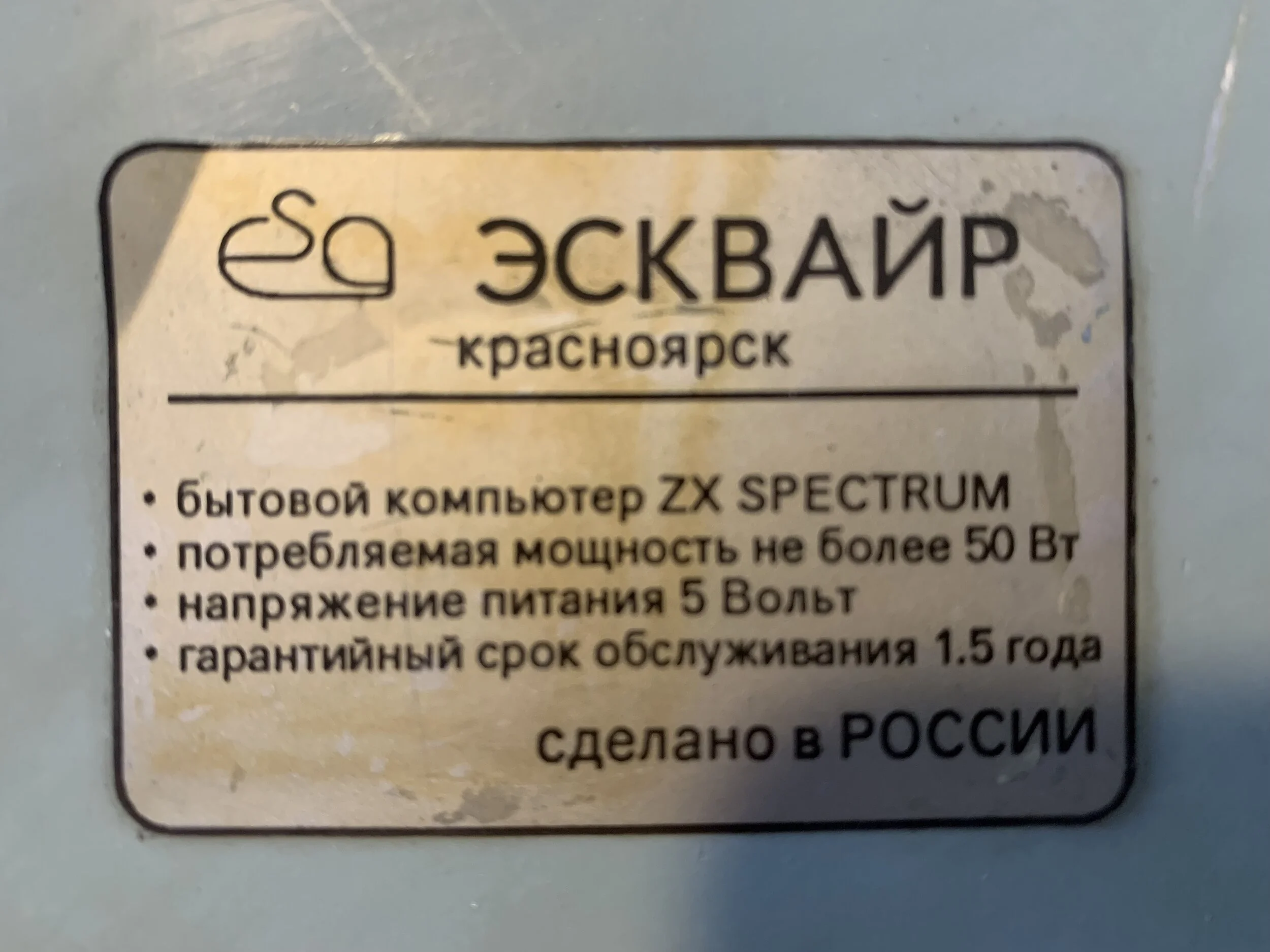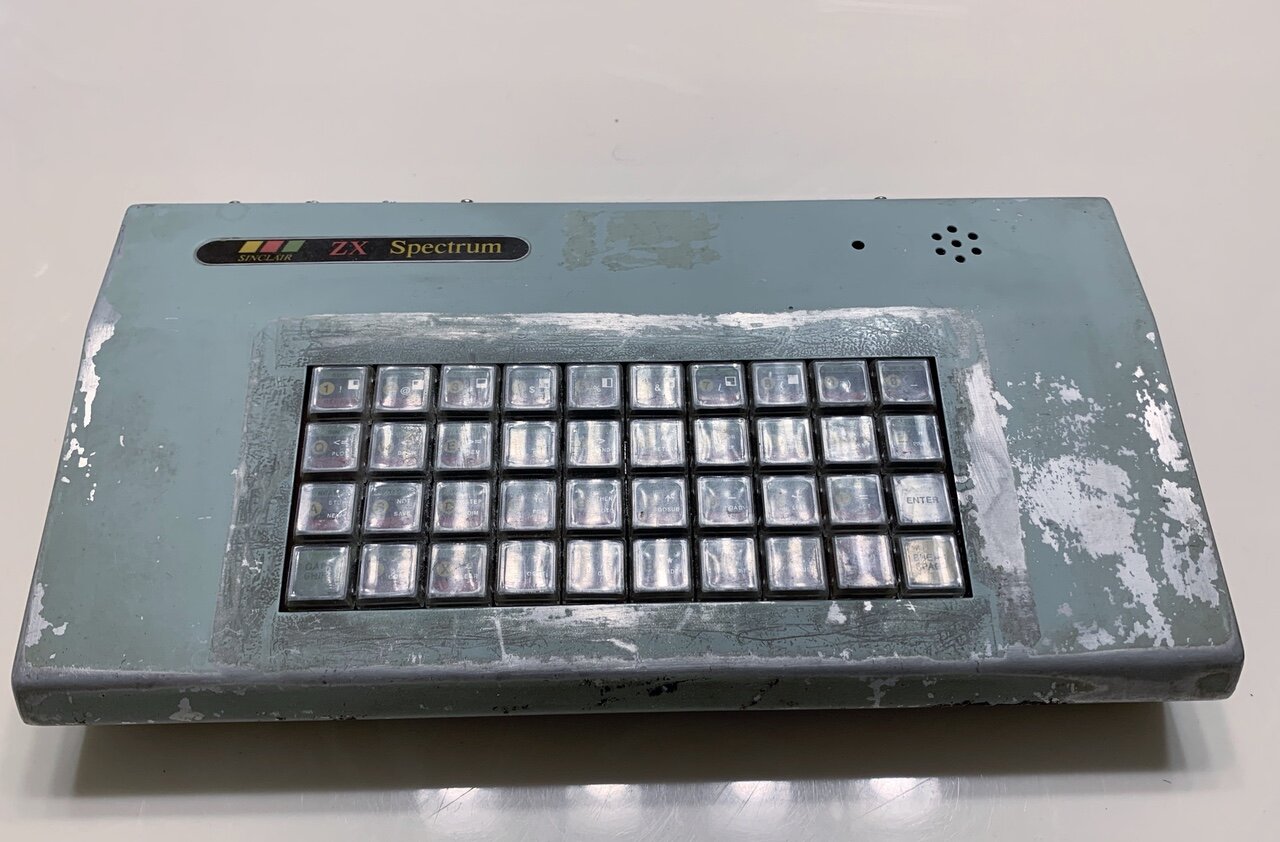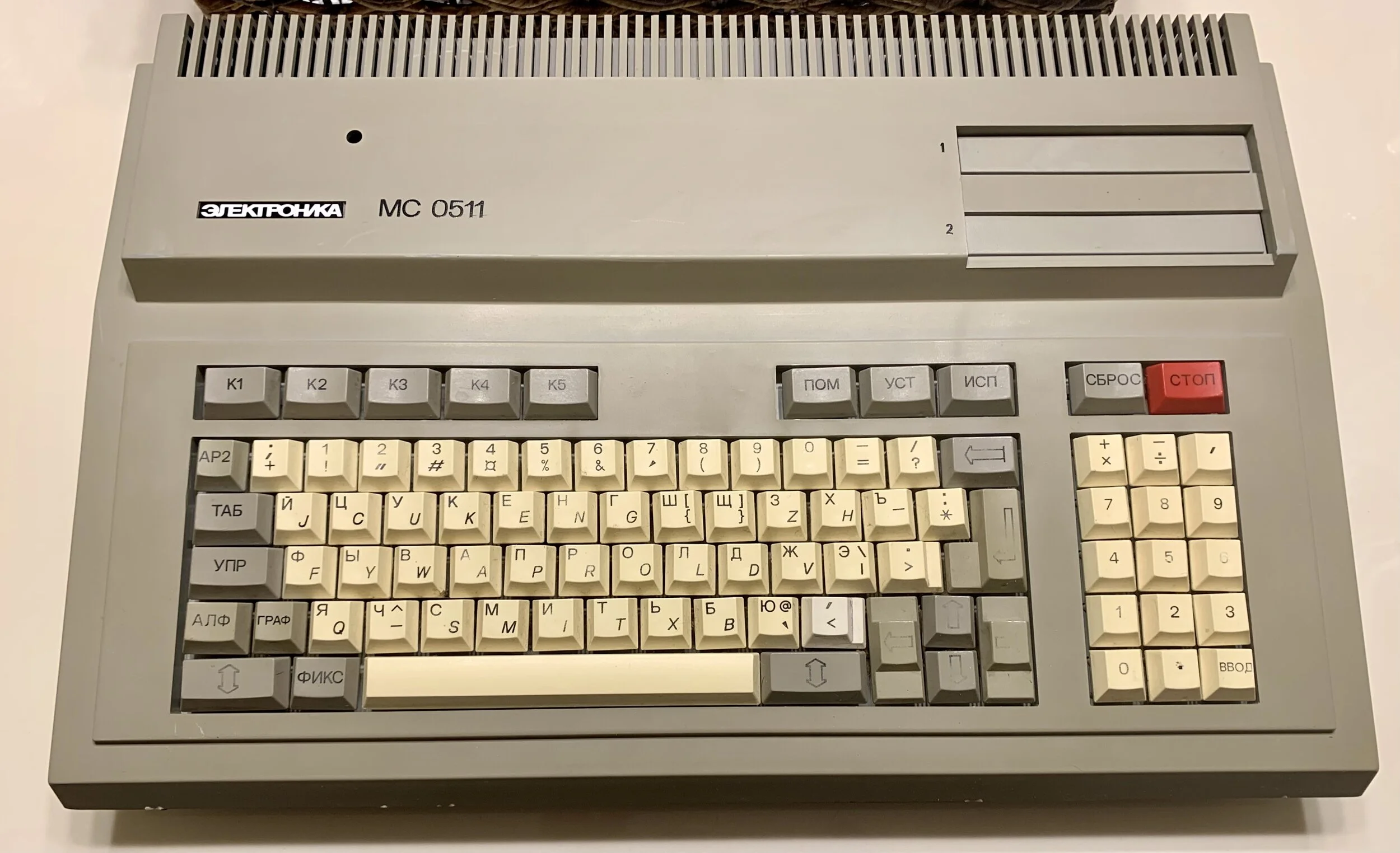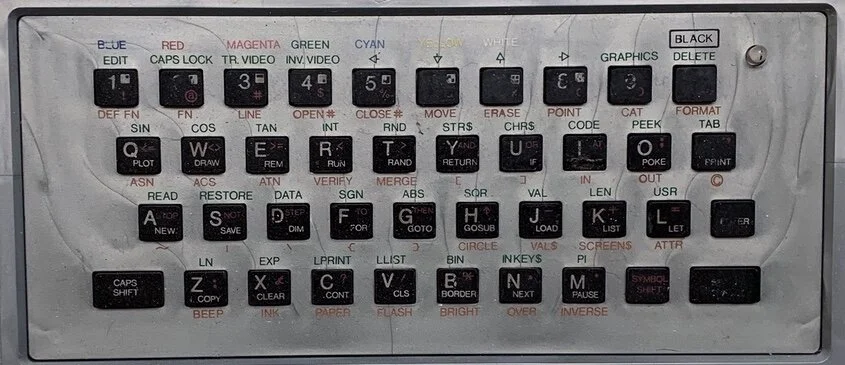ZX Spectrum, Esq.
Part 4 of the Iron Curtain Clones series.
So this is the last of my small collection of ZX Spectrum clones from the 80s and 90s. For “clones” of a single computer, they have varied quite dramatically in how they look. Take a look at the other computers in the series: Part 1, Part 2, Part 3
When I saw this last computer on eBay, I knew I had to have it, just because of how ugly it is. Little did I know I was going to get a clone with status. Because this, ladies and gentlemen is the Esquire.
Even if it was brand new, this wouldn’t have been an attractive computer. The paintwork is an unattractive, institutional grey with an “abandoned nuclear power station control panel” vibe. It’s been worn/scratched off in several places and a gentle scratch with a fingernail will flake more off. I’m not sure if it was a more durable finish when this machine was new. The case is, I’m guessing, alumin(i)um which means this isn’t as heavy as it might first appear.
The Esquire weighs a smidge under 1lb 15 oz or 879 g, which makes it still 9 oz (255 g) heavier than a Spectrum but because it’s much larger in all dimensions, it feels relatively light.
The top of the computer is relatively straightforward. At the top right is a group of holes for a speaker and to the left of that is a hole where a power LED may have been at one time. At the top left is the label. It’s a foil label that fits into a slight indent in the top of the case.
Unlike another clone, the Esquire manages to spell Sinclair properly. The yellow, red, and green bars don’t exactly give the impression of a full spectrum of colors but they do carry over into the horror show in the middle of the machine. The keyboard.
The keyboard has forty keys in four rows of 10. There’s no staggering of the rows to make it slightly easier for typing, but I don’t think the user experience was a major factor in the design of the Esquire.
The keys are made of clear plastic with a foil label inserted. The red, green, and yellow from the label make a somewhat unwelcome return, with a dark green bar at the top of each key, and a red bar at the bottom. The contrast with the black text isn't particularly good. The use of a yellow circle to contain the number or letter on the keys is easier to read, but I can’t help thinking that yellow text on the black background would have allowed a larger character and still have good contrast. The remaining two functions of the key are printed in white on black which is a better choice given the size of the text.
I’ve tried to clean the plastic keys but to be honest, I think most of the visibility issues are caused by the thickness of the plastic and surface scratches. The clear plastic keys seem to be able to catch the light at almost any angle, so the already murky keys are even harder to read in almost all lighting conditions.
The keys themselves have decent travel, but a distinctively spongy feel. The grid layout, combined with the almost no spacing between the keycaps, also makes it very easy to his two, or even four keys at a time
The sides of the machine are both empty with all the IO being around the back, but the side view gives you a better idea of the size of the Esquire. It also shows that the four rows of keys are slightly stepped to presumably try and create a better typing experience but there’s little chance of that given the rest of the keyboard’s shortcomings.
Round the back, there’s a reset button on the far left. Next to it is an unmarked port which must be the power connector. On the right-hand side there’s a video out, RGB out, tape in/out, and a joystick port. They’re all DIN connectors and slightly worryingly the power and joystick connecter appear to be the same which I can never imagine is a good idea.
Underneath, there’s not a whole lot to see. Remarkably, all four of the rubber feet have survived, although the fact that they are screwed on, rather than glued almost certainly helped.
There’s a large label in the center of the bottom of the case. I don’t read (or speak, or write) Russian, so the label is indecipherable other than the ZX SPECTRUM and a couple of digits.
Google Translate comes to the rescue with its camera support to translate things like I dunno, labels, on the fly. I have to say I still find this a remarkable feature. The translation flickers back and forth between some of the words. The name at the top read as ESQUIRE at some times and it seemed to settle on ESQ. The rest is the kind of information you’d expect to see on a label like this, although if I remember correctly, the 18 month warranty period easily beat the warranty of the Spectrum (was it ninety days?).
Finally, we get to see this thing’s guts.
A lot of empty space in the case with the keyboard attached to the top of the case and the motherboard attached to the bottom. It’s a fairly compact board, unlike the YPRA which I wrote about in part 3 of the series. But what’s with that wiring?
The cables appear to be wrapped in fiber and in the case of the large cable on the right-hand side of the board, it’s almost like it’s woven. I’m not sure if this was a common wiring style in the USSR in the ‘80s but it’s very different from anything I’ve seen before, and none of the other clones I have are anything like it.
Just to the left of the cables in the image above you can see a couple of EEPROMs, one of which is socketed, while the other is soldered to the board.
And as you’d expect in a Spectrum clone, in the center of it all is the mighty Zilog Z80 processor.
I hope you’ve enjoyed this short series on my little collection of Iron Curtain Clones. (As George Rudolf Mezzomo pointed out on Facebook, this machine, since it states “Made in Russia”, doesn’t really qualify for the “Iron Curtain” title.)

















